Disclaimer: As a Chewy and Amazon affiliate, I earn from qualifying purchases. This does not impact our reviews and comparisons.
What are the foods that are poisonous to cats?
Examples include onions, garlic, chocolate, coffee, oranges, and grapes.
Use caution with leftovers, as they can contain ingredients not good for cats.
In this article, I’ll run through 17 foods that are poisonous to cats and why they are worth avoiding.
I am not a veterinarian and I recommend seeking the advice of a vet for any further questions. This article is not intended as medical advice.
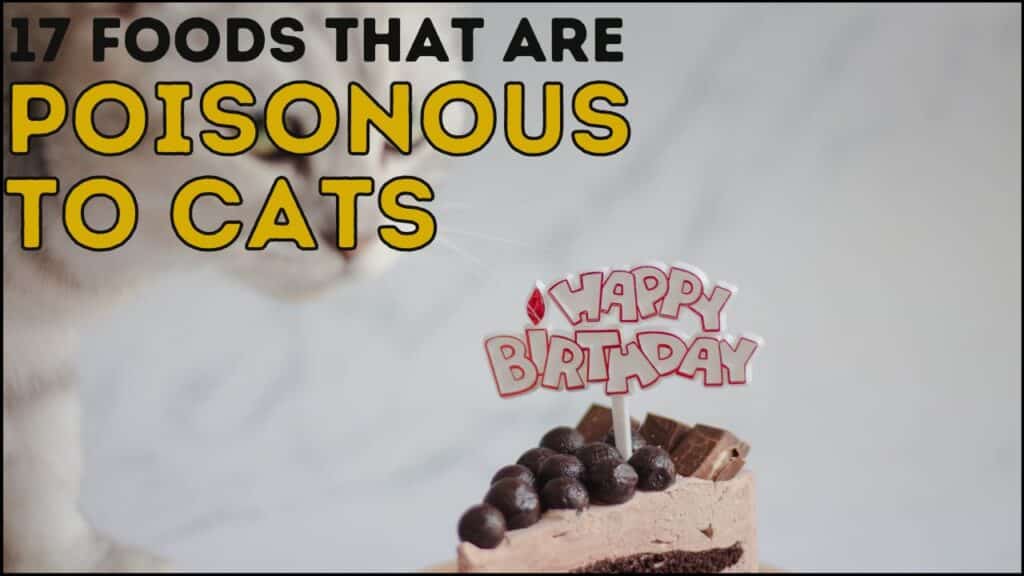
17 Foods That Are Poisonous to Cats
Many plants are toxic to cats.
Cats have fewer enzymes to detoxify many compounds found in food.
In small amounts, they don’t harm you (or your cat), but they do if the levels build up.
Keep in mind some of these foods may safe in some circumstances (e.g. raw meat that is fresh).
Here’s 17 foods and items to avoid giving your cat:
1. Alcohol
Why?
Alcohol contains ethanol, which depresses the central nervous system.
What it causes
Intoxication can cause vomiting, diarrhea, and decreased reflexes.
Severe intoxication results in tremors, coma, and death.
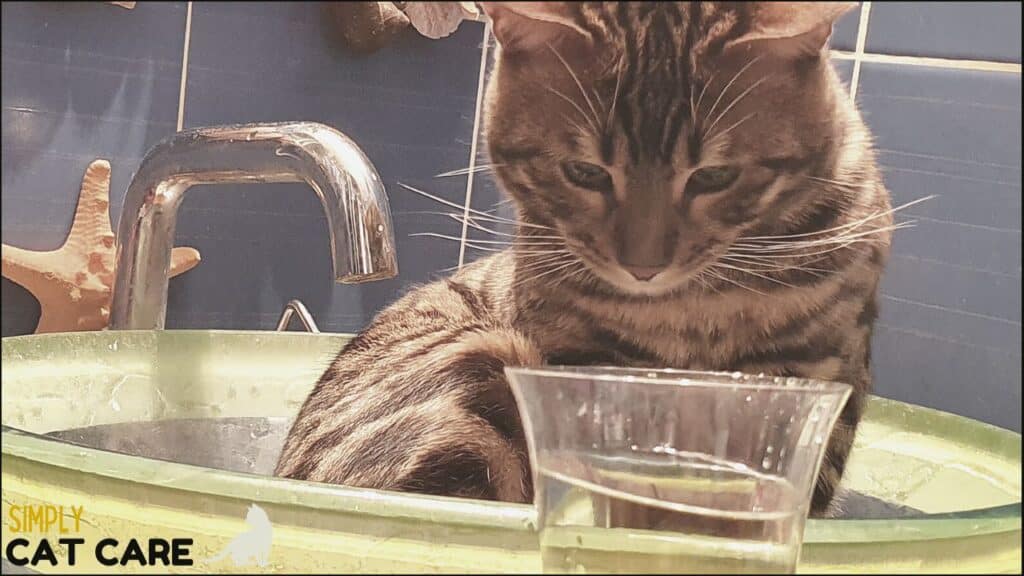
2. Avocado
Why?
Avocados contain a toxin called persin which is toxic to cats.
Toxins are in both the fruit and leaves of the avocado.
The pit itself can also obstruct the digestive tract.
What it causes
Avocados can cause vomiting, diarrhea, and ascites.
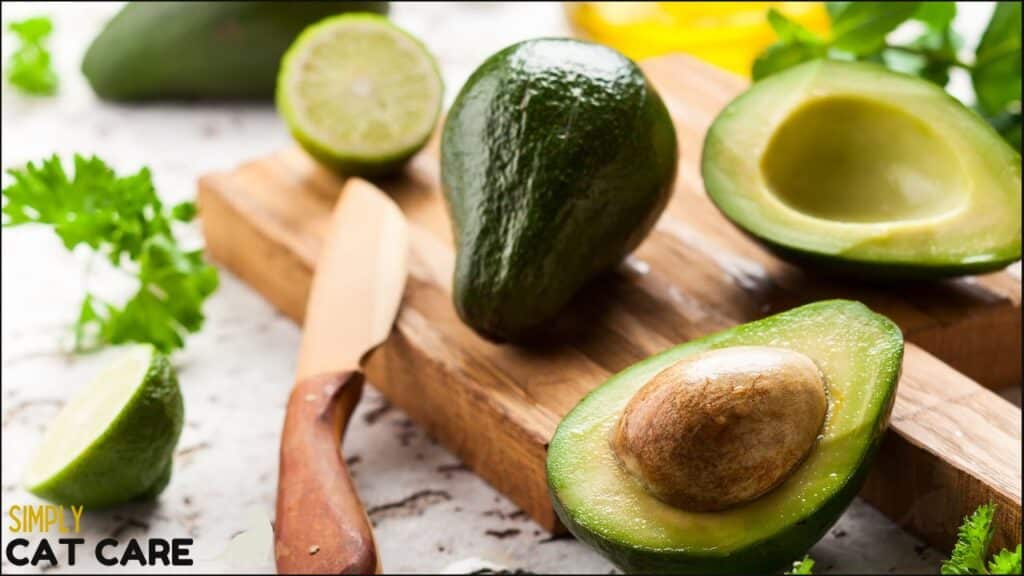
3. Chewing Gum
Why?
Contains xylitol which is a sugar alcohol, and a substitute for sugar.
Xylitol promotes insulin release.
What it causes
Xylitol can cause hypoglycemia (low blood sugar) due to the excessive release of insulin.
Your cat can suffer from lethargy, vomiting, ataxia, and seizures.
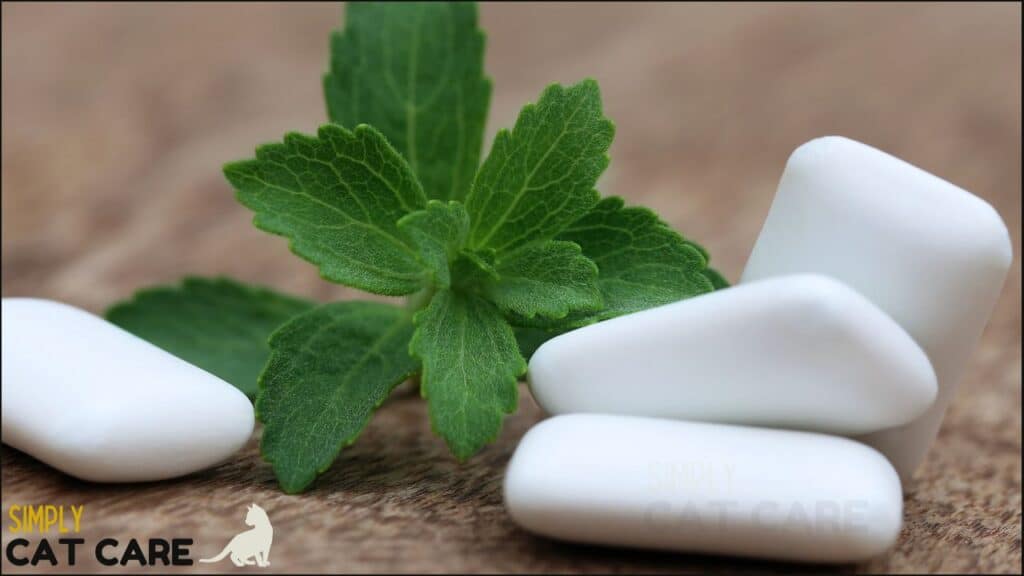
4. Chocolate
Why?
Chocolate contains theobromine (3,7-dimethlyxanthine) which blocks the adenosine receptors in the central nervous system.
The darker the chocolate (indicated by % on the packet), the more theobromine in the chocolate.
What it causes
Theobromine can cause vomiting, diarrhea, and tremors.
It can also lead to life-threatening cardiac arrhythmias.
White chocolate may be a little safer but still contains milk. It’s best to avoid small amounts of any chocolate in a cat’s diet.
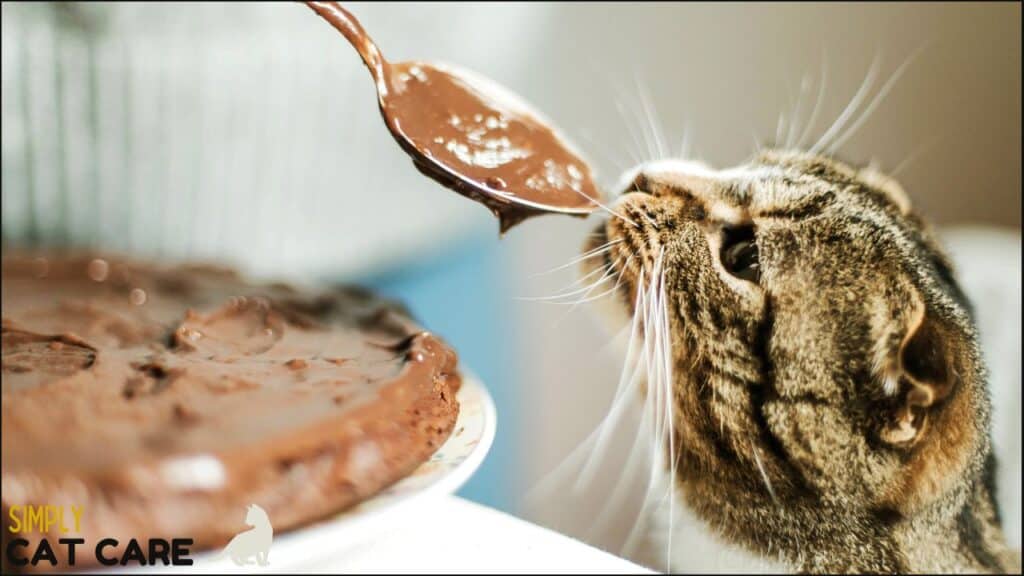
5. Coffee
Why?
Coffee contains caffeine (1,3,7-trimethylxanthine).
This molecule acts similarly to theobromine in chocolate and stimulates the central nervous system.
What it causes
Causes similar symptoms to chocolate toxicity, including vomiting, diarrhea, and tremors.
Chocolate contains theobromine (3,7-dimethlyxanthine) which blocks the adenosine receptors in the central nervous system.
Caffeine-rich foods are best avoided.
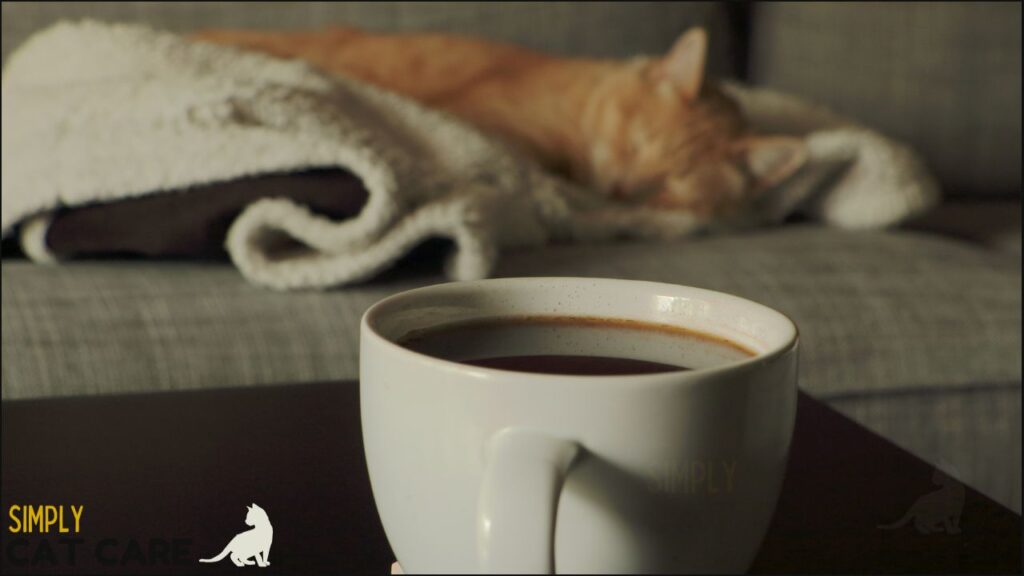
6. Apples
Why?
Contains cyanogenic glycosides that convert to cyanide.
Leads to cyanide poisoning.
What it causes
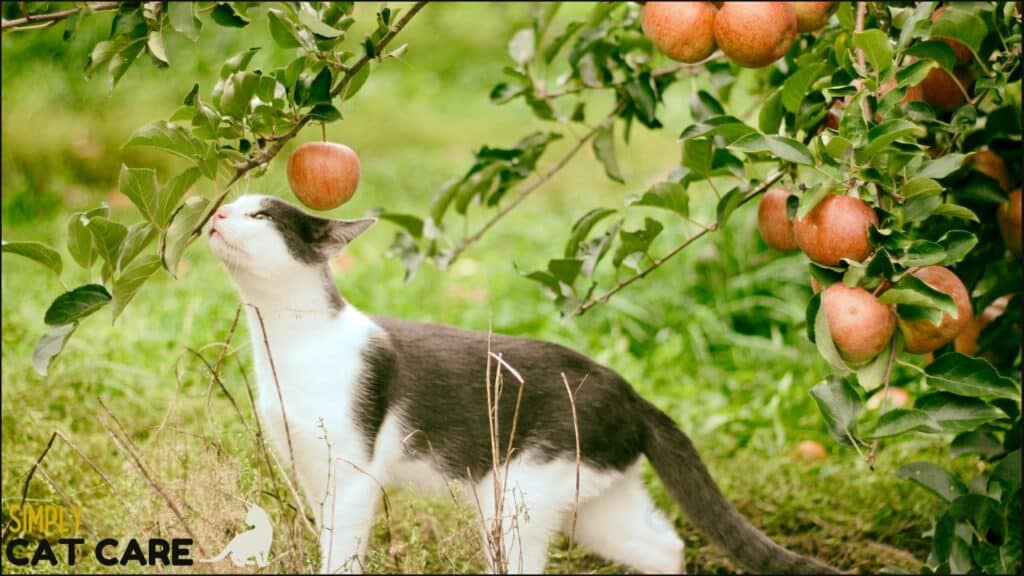
7. Grapes
Why?
There are unknown toxins contained within the flesh of the fruit.
Grapes and raisins both contain these toxins.
What it causes
Causes acute renal failure.
Clinical signs include lethargy, nausea, vomiting, diarrhea, anorexia, and dehydration.
The dosage needed to create toxicity is around 11-30g/kg. Whilst grapes and raisins look like bite-sized snacks for cats they are worth avoiding.
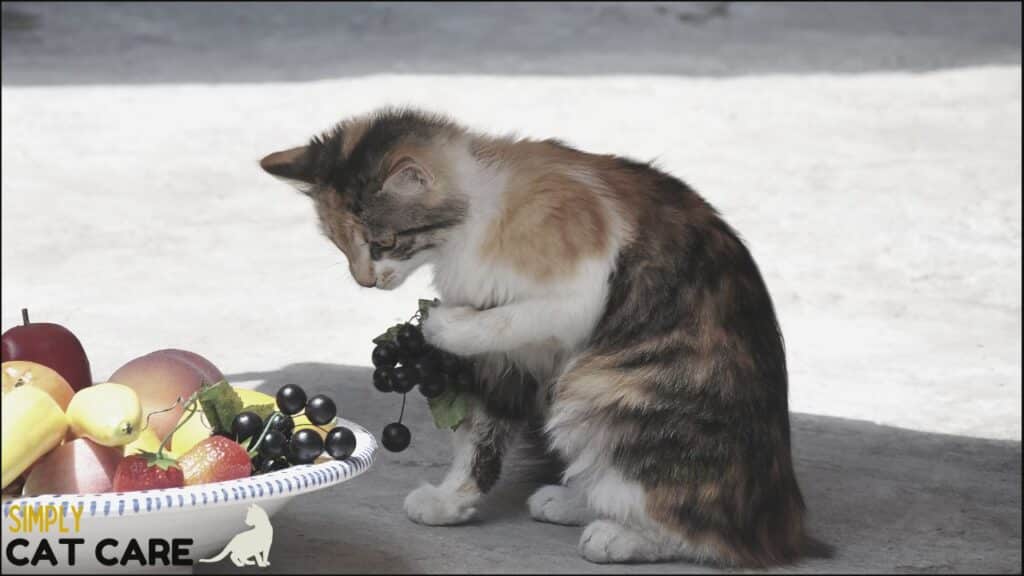
8. Green Tomato
Why?
Contains solanine which is a glycoalkaloid.
This is high in the sprouts of potatoes when exposed to light.
The chemical is also found in unripe green tomatoes and decreases with ripening.
What does it cause?
The toxins cause vomiting, diarrhea, muscle tremors, anxiousness, and seizures.
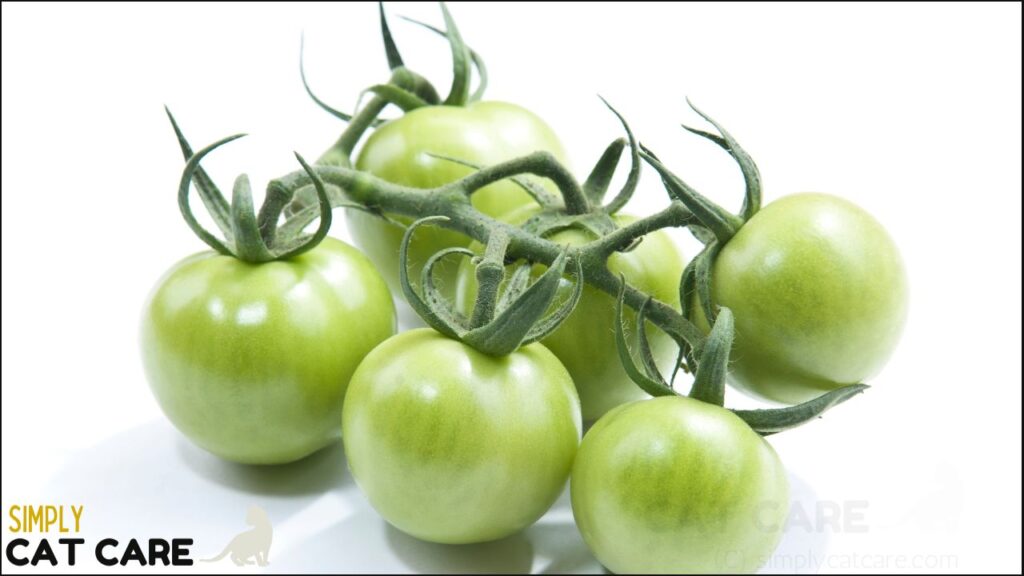
9. Macadamia Nuts
Why?
An unknown toxin induces toxicity in as little as 0.7g/kg of nuts.
Toxic whether roasted or raw.
What does it cause?
Causes weakness, depression, vomiting, ataxia, tremors, and hyperthermia within 12 hours of consumption.
Affects the muscles and digestive system.
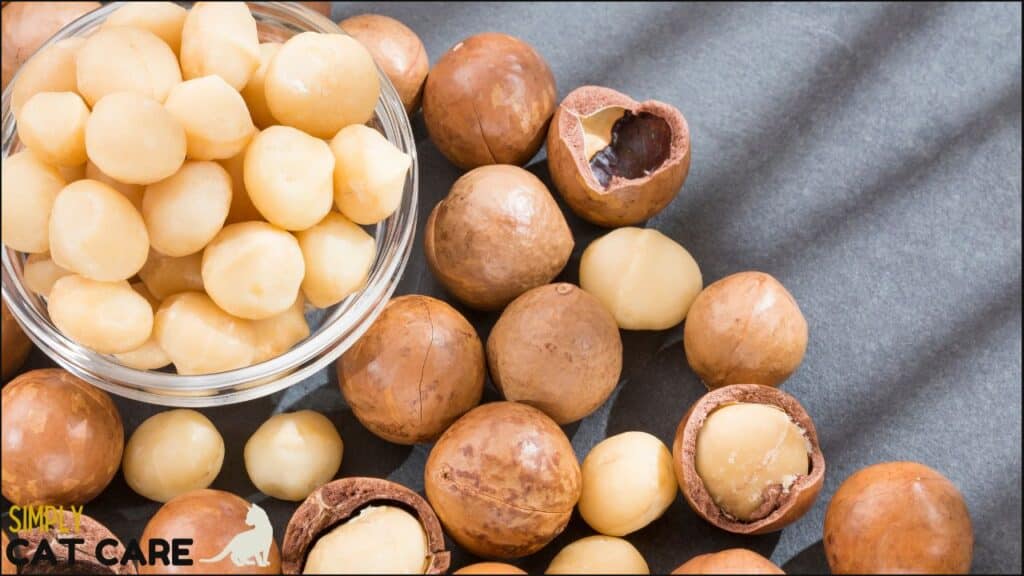
10. Mold
Why?
Contains mycotoxins that grow on a variety of spoiled food products such as bread, nuts, vegetables, and dairy.
What does it cause?
Leads to vomiting, hyperactivity, hypersalivation, tachycardia, depression, incoordination, and tremors.
Can lead to coma and death.
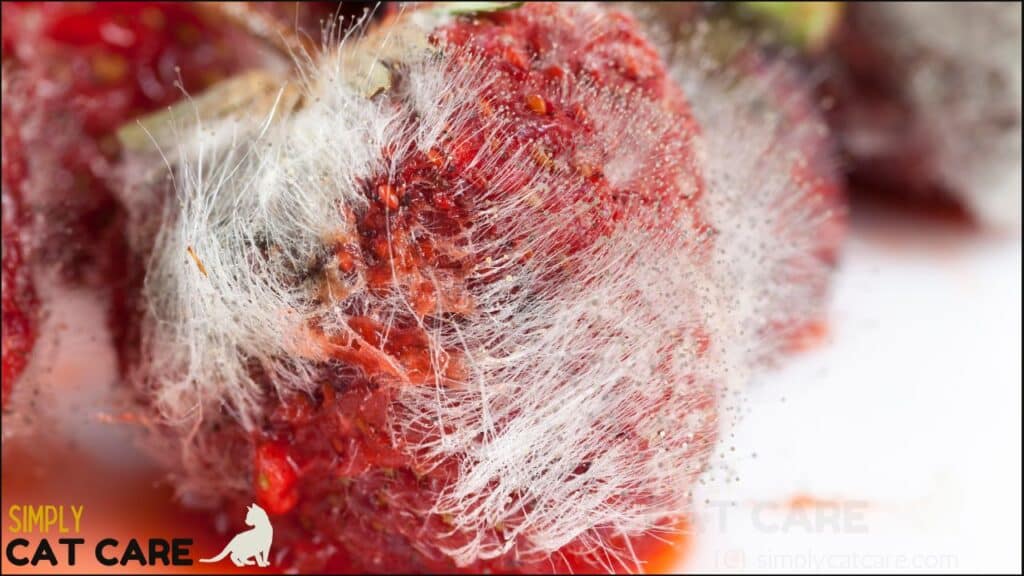
11. Garlic
Why?
All plants of the allium family (e.g. garlic and onions) contain organosulphurated compounds.
The metabolism of these foods leads to an increase in oxidative species that damage red blood cells.
Cooking does not reduce the toxicity of these plants.
What does it cause?
Cats have a high amount of sulfhydryl groups on the hemoglobin of red blood cells.
They are more prone to oxidative damage, which can cause hemolysis. This can end up leading to anemia.
Consumption of 5g/kg is toxic to cats. Baby foods also have onion and onion powder in them for flavor. Do not give baby food to your cat as this often contains garlic powder.
Garlic and onion may find their way into homemade cat food recipes online (even from vets).
Learn More:
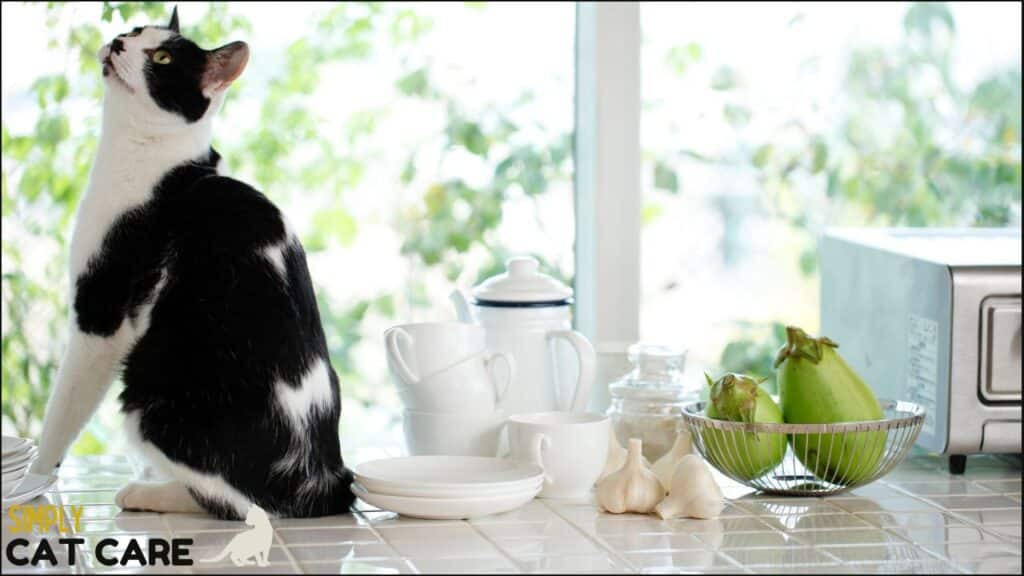
12. Oxalate Rich Foods
Why?
You can find oxalates in a range of foods including bran, cereals, nuts, seeds, soy, and green vegetables.
They lead to calcium oxalate crystalluria and urolithiasis.
What does it cause?
Can cause pain, urethral blockage, and kidney-related complications. This is one reason to avoid grain rich cat food.
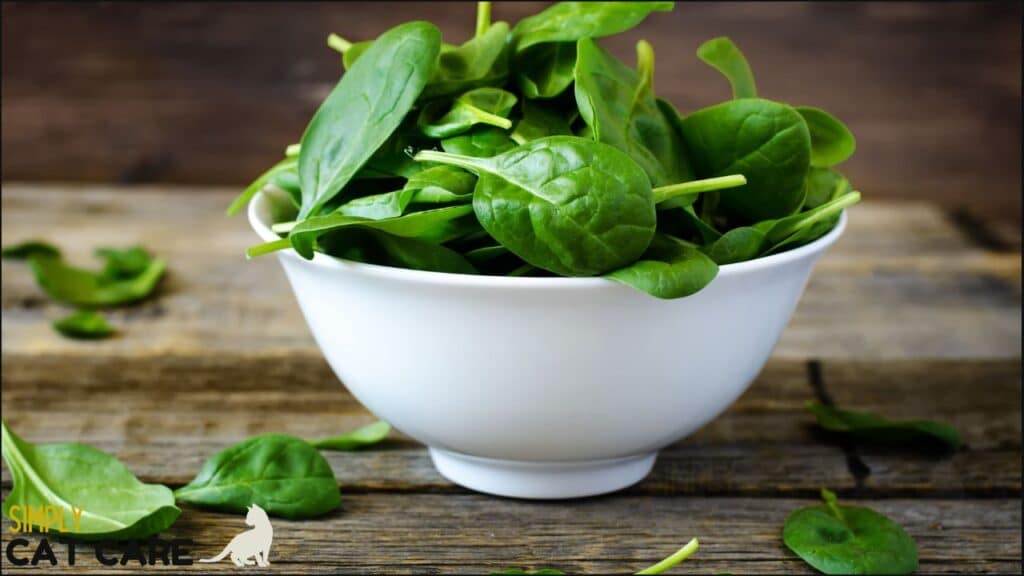
13. Yeast
Why?
Baker’s yeast, or saccharomyces cerevisiae, ferments which can lead to ethanol production (and subsequent ethanol toxicity) and obstruction of the digestive tract.
Bread bakers add yeast to raw bread dough to leaven it.
What does it cause?
Raw bread dough and expand, obstructing the digestion of the cat. This can lead to bloating, pain, nausea, incoordination, and depression.
Ethanol toxicity leads to nausea and diarrhea. Yeast dough is definitely a human food that you want to steer clear of.
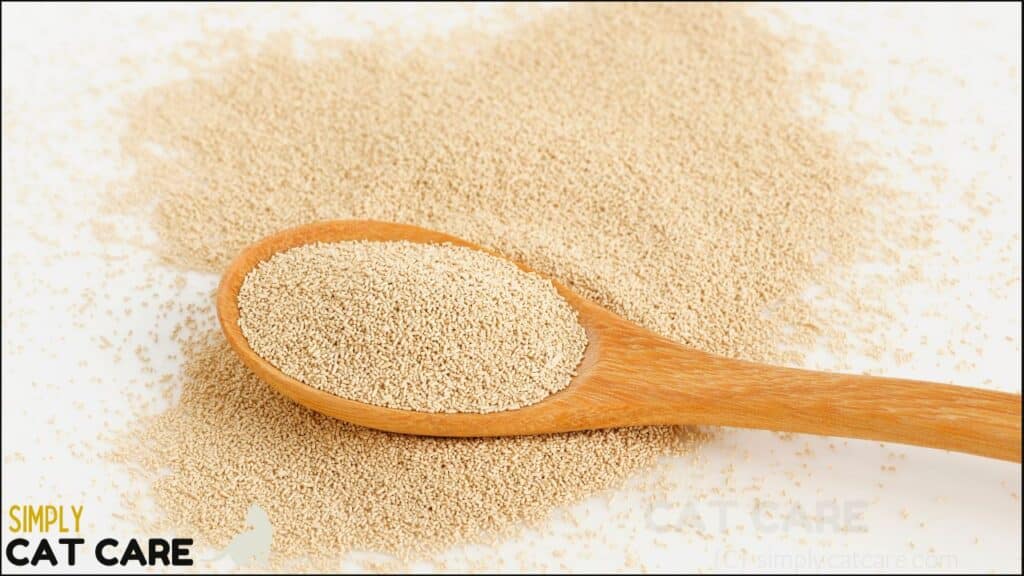
14. Raw Meat
Why?
Can be a source of salmonella and e coli.
This can be from a variety of meat such as raw fish, beef, or poultry.
What does it cause?
Can lead to nausea, fever, pain, and cramping.
Whilst you can give your cat raw meat, you need to take care of the meats you buy.
Make sure the meat is bought fresh from the butcher and stored safely in the refrigerator. Most meats last around 3-5 days in the fridge.
There are freeze-dried raw meats that your cat can have as a treat and are safe to consume. Other pet food offer vacuum sealed and refrigerated foods delivered to your door.
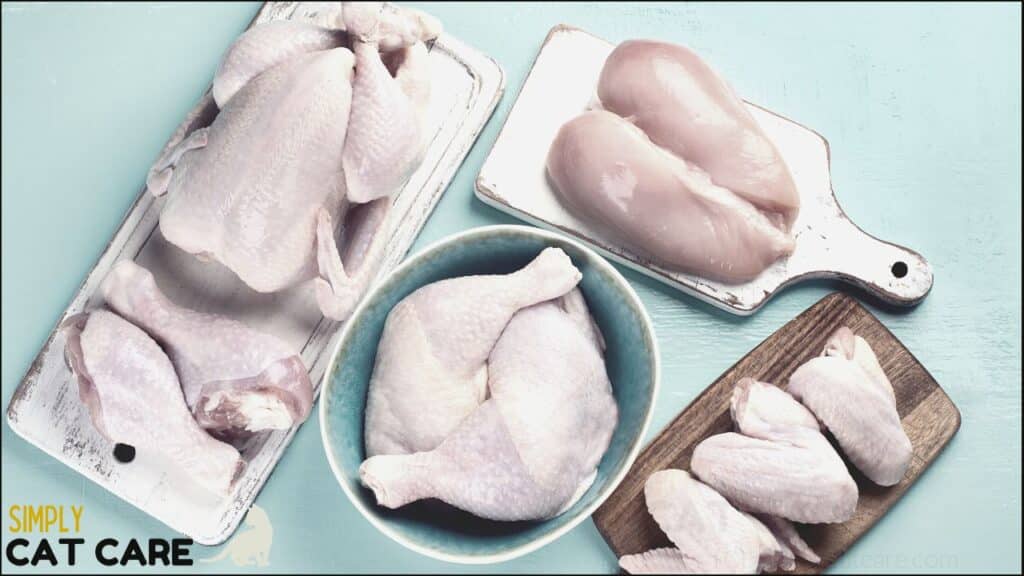
15. Raw Eggs
Why?
The egg white part of raw eggs contains avidin.
This is an enzyme that decreases biotin absorption, an important vitamin that maintains a healthy coat.
What does it cause?
The deficiency of biotin leads to hair loss, xerodermia, and squamosis.
Can also lead to weakness, growth delay, or skeletal deformity. Your cat isn’t a bodybuilder, so best to steer clear of raw eggs.
There’s no benefit to consuming eggs raw over just cooking them.
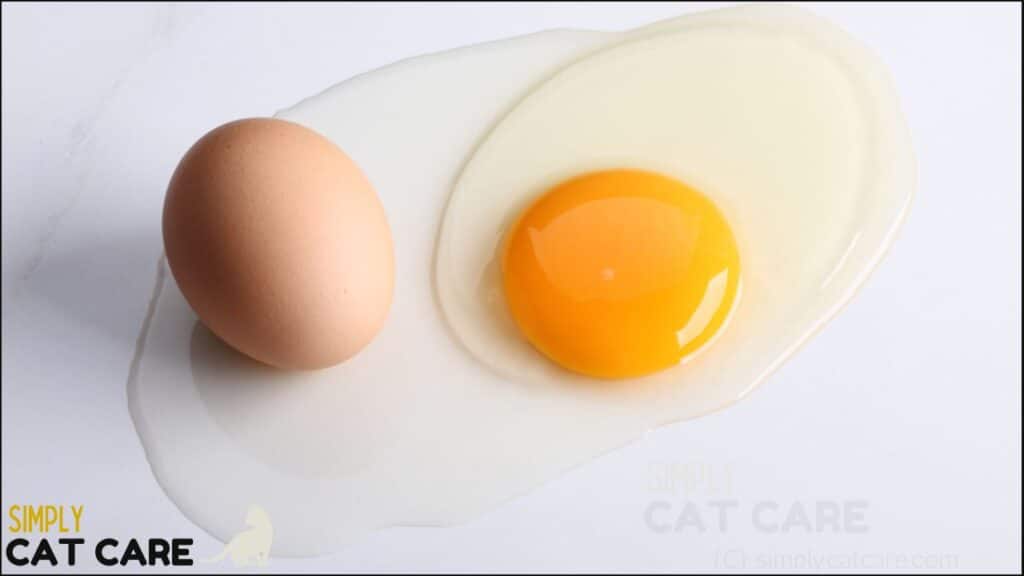
16. Salt
Why?
Cats need salt in moderate amounts found in cat food. An excess of salt will lead to health problems if overconsumed.
What does it cause?
Leads to polyuria and polydipsia. Polyuria is when your cat is peeing too often.
Keep in mind, cats have a hard time drinking enough water, so this isn’t a good thing.
Can also cause vomiting, diarrhea, depression, hyperthermia, seizures, and even death in extreme cases of overconsumption.
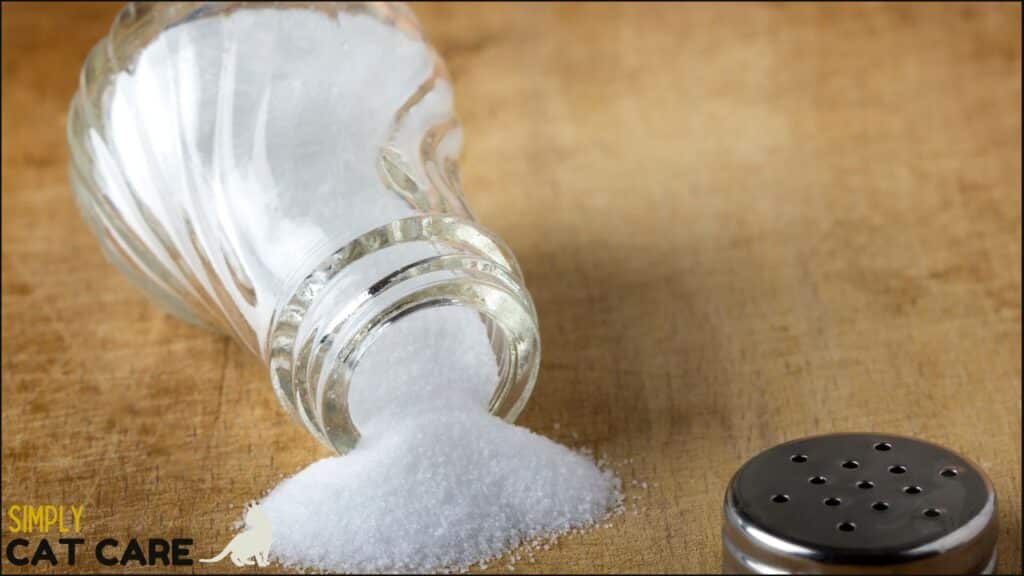
17. Citrus Fruit
Why?
The leaves, peels, fruit, and seeds contain citric acid and essential oils.
What does it cause?
This can lead to stomach upset and irritation.
Depresses the central nervous system.
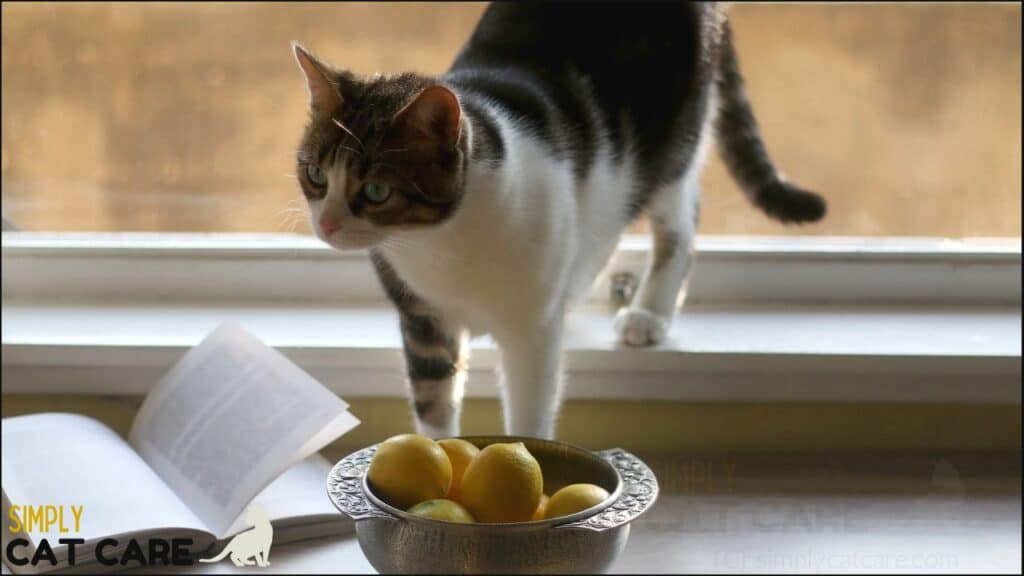
Frequently Asked Questions
Can I Feed My Cat a Raw Diet?
The science is unclear on the benefits of raw diets.
Some benefits may include:
- Improved digestion
- Clearer skin and coat
- More energy
However, aren’t enough well-controlled studies to confirm these benefits.
Some vets claim a cat’s digestive system may be better suited to digesting raw foods due to more stomach acid.
Is Dairy Safe for Cats to Eat or Drink?
The lactose in milk and yogurt can give cats an upset stomach.
This is because cats are lactose intolerant and lack the enzyme required to digest the lactose sugar in milk.
Cheese contains no lactose but is high in calories. As with humans, cheese is a food that can overconsume quickly and lead to weight gain.
Learn More:
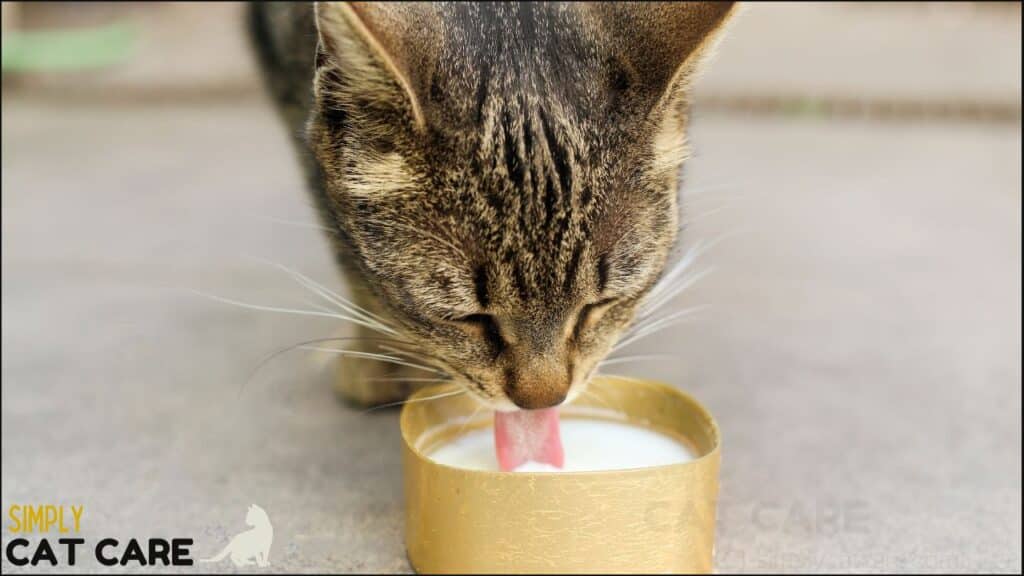
Conclusion
Avoid feeding your cat onions, garlic, yeast, chocolate, apples, and grapes. Cats haven’t evolved the ability to process these foods.
Other foods worth steering clear of include as raw eggs, salt, yeast, and alcohol. Raw meat is a controversial food item that may be safe to eat if fresh and stored safely.
If you think your cat has consumed something toxic to them then call the poison control center for assistance. Symptoms are variable depending on the food ingested.
If you want help choosing food, here’s a list of foods from our friends at Pettopia to help you understand how to get started choosing foods for your cat.
